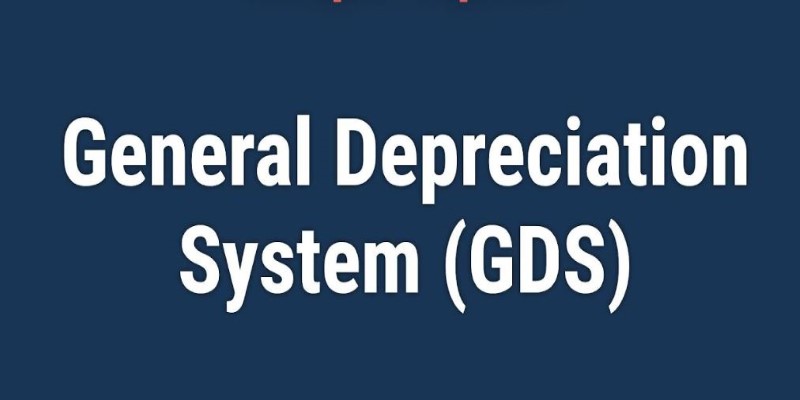MACRS Explained: How the Modified Accelerated Cost Recovery System Impacts Your Taxes
Dec 13, 2024 By Triston Martin
The Modified Accelerated Cost Recovery System (MACRS) is a method used by businesses to depreciate assets for tax purposes, helping reduce taxable income over time. It allows businesses to recover the costs of long-term assets, such as property and equipment, through yearly depreciation deductions.

MACRS is the acronym for Modified Accelerated Cost Recovery System, which was initiated by the U.S. Tax Reform Act of 1986. MACRS helps to accelerate depreciation, which results in larger deductions during the earlier years of an asset's life. Knowing how MACRS works can substantially determine your strategy because it lets you cash in on maximum tax savings while your business efficiently manages long-term assets.
What Is MACRS and How Does It Work?
At its heart, MACRS is a method of depreciating business assets. However, it is usually applied to spread the cost of an asset over its useful life for tax purposes. In reality, depreciation is an allocation of the cost of a long-term asset over its useful life. Businesses can, therefore, take an annual deduction of part of the cost of that asset, reducing taxable income and, thus, taxes owed.
MACRS was introduced by the U.S. Tax Reform Act of 1986 and is now the standard means for asset depreciation for tax purposes. The IRS specifies specific recovery periods for different classes of assets, of which 3 to 39 years exist. Generally, the system provides more upfront depreciation than a straight-line method. It gives firms a quicker means of recovering costs in the first years of an asset's life through an accelerated depreciation method.
One important thing to remember about MACRS is that it only applies to tangible property, such as machinery, equipment, and buildings. Intangible assets, like patents or trademarks, are depreciated using different methods.
Types of MACRS Depreciation Systems
The two systems of MACRS depreciation are the General Depreciation System, or GDS, and the Alternative Depreciation System. The rules that govern the depreciation of assets under each system are different, and a business firm will select between them based on criteria that may include the type of property, intended use, or specific financial goals of the business.
General Depreciation System (GDS)

The General Depreciation System (GDS) is the most commonly used method for asset depreciation. Under GDS, assets are depreciated over a set number of years based on their classification by the IRS. For example, office furniture may have a 7-year recovery period, while commercial buildings might have 39 years. GDS is considered "accelerated" because it allows businesses to take larger depreciation deductions in the early years using methods like the Double Declining Balance (DDB), switching to straight-line depreciation once the DDB deductions become smaller.
Alternative Depreciation System (ADS)
The Alternative Depreciation System (ADS) offers a more conservative approach to depreciation, using a slower rate compared to GDS. This results in smaller deductions each year, spreading depreciation over a longer period. ADS is particularly useful for certain properties, such as those used outside the U.S. or for tax-exempt purposes. Unlike GDS, ADS always uses the straight-line method, meaning the same amount of depreciation is applied each year, which can be advantageous for businesses seeking more consistent, long-term tax strategies.
Key Differences Between GDS and ADS
The primary difference between GDS and ADS is the speed of depreciation and the method used. GDS typically offers larger, front-loaded deductions that can help businesses save on taxes in the earlier years. This is especially beneficial for businesses that want to reduce their taxable income quickly and reinvest that money into other areas of the business.
On the other hand, ADS provides smaller deductions over a longer period, making it a better choice for businesses that want to spread out their deductions or maintain a more consistent depreciation schedule over the years. The choice between these two systems depends on your business needs and long-term financial strategy.
Benefits and Drawbacks of MACRS
MACRS is a popular method for depreciating assets in the U.S., offering significant tax savings and cash flow benefits. However, businesses should also consider its limitations when choosing this method.
Benefits

One of the primary benefits of the Modified Accelerated Cost Recovery System (MACRS) is its ability to provide significant tax savings in the early years of an asset's life. By allowing businesses to depreciate assets quickly, MACRS reduces taxable income upfront, which can lead to substantial cash flow benefits. This is especially useful for businesses with high capital expenditures, as it allows them to recover costs faster and reinvest in growth opportunities. Additionally, MACRS simplifies the depreciation process with clear guidelines for asset classifications and recovery periods, making it easier to comply with IRS regulations.
Drawbacks
However, there are also some drawbacks to using MACRS. While it offers quick depreciation, the accelerated nature can result in smaller deductions in the later years of an asset's life. This may not be ideal for businesses that prefer steady deductions over time. Furthermore, MACRS may not always reflect the actual usage or decline in value of an asset, potentially leading to a mismatch between depreciation and actual wear and tear. Lastly, since the IRS sets strict guidelines for depreciation periods, businesses may have less flexibility in adjusting their schedules based on their specific needs.
Conclusion
Modified Accelerated Cost Recovery System (MACRS) offers businesses a valuable method for depreciating assets, enabling faster tax relief through larger deductions in the earlier years. By understanding the two main systems, GDS and ADS, companies can choose the best approach based on their financial goals. MACRS helps improve cash flow and ensures better tax management, making it a crucial tool for long-term financial planning. Always consult a tax professional to optimize its benefits and stay compliant with regulations.








